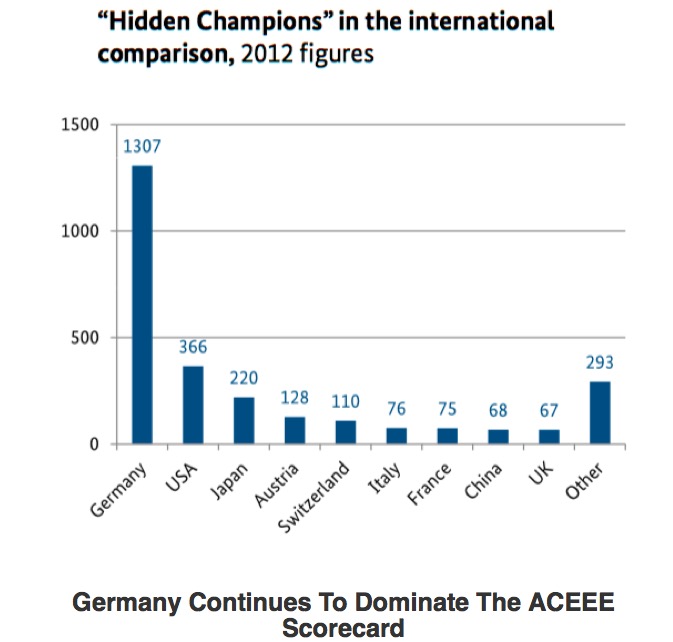Roy Hales writes on the CleanTechnica website about the role SMEs play in Germany in its low carbon energy transition. There are important messages for all of us.
SMEs Are Energiewende’s Backbone
A number of prominent companies come to mind when you mention Germany’s energy transition. Names like E.ON, Volkswagen, and Siemens are recognized around the world. But the thing is, Germany has 3.67 million small and medium-sized business enterprises (SME), and SMEs are Energiewende’s backbone.
According to the Federal Ministry of Economics and Technology, “studies show that no other country has as many hidden champions as Germany: some 1,300 world market leaders from the ‘German Mittelstand’ have successfully found niches for their products.”
Most of the nation’s businesses are family owned and managed by their owners.
They range from “innovative software-smiths” to “venerable old artisan businesses.”
“These constitute 99.6 percent of all companies, employing almost 80 percent of all employees in Germany,” according to Germany Trade & Invest’s ECONOMIC OVERVIEW GERMANY: Market, Productivity, Innovation.
It is largely because of their efforts that Germany continues to dominate the American Council for an Energy-Efficient Economy (ACEEE) scorecard, obtaining firsts in “National Efforts,” “Buildings,” and “Industry.”
“Energy Efficiency plays a key role in Germany’s energy policy, the Energiewende, which aims to achieve a highly efficient and almost carbon neutral economy by 2050 at the latest. Our latest program, the National Action Plan on Energy Efficiency (NAPE), focuses on innovative industrial processes, energy-efficient buildings and products, and long-term investments,” said German Ministry for Economic Affairs and Energy Senior Advisor for General Issues of Energy Efficiency Georg Maue.
“Germany is the world leader, as reflected in the ACEEE scorecard, and the energy-efficiency sector is extremely dynamic as a result. Furthermore, a lot of funding is available in Germany. For example, under one program for heat recovery in industry up to 50 percent of the investment costs can be funded through loan repayment grants under certain circumstances. Germany is certainly an interesting market for international businesses in the energy efficiency sector,” says Rob Compton, Manager of Energy Efficiency and Smart Cities at GTAI.
He added that, “The German government aims to reduce greenhouse gas emissions by 80-95 percent by 2050 compared to 1990 levels. Furthermore, the Paris Agreement requires the world to become greenhouse-gas neutral in the second half of the century. Germany is one of the first EU member states to start the ratification process. In light of the agreement, the federal government will publish a climate protection plan this year that will contain measures to meet this target.”
In contrast to the United States, where public disenchantment has reached the point that demagogue Donald Trump has become a serious candidate for president, most German workers identify with their employers and government policies.
A May–June 2015 poll of 1,513 German respondents, conducted by the European Commission, found strong support for Energiewende:
“More than three-quarters (79%) agree that fighting climate change and using energy more efficiently can boost the economy and jobs in the EU. The vast majority (91%) believe that it is important that their government sets targets to increase the amount of renewable energy used, such as wind or solar power, and provides support for improving energy efficiency by 2030 (90%).”




How many other European governments can truthfully lay claim to such consistent policy foresight?
Now that would be very interesting to know but I think we can guess.